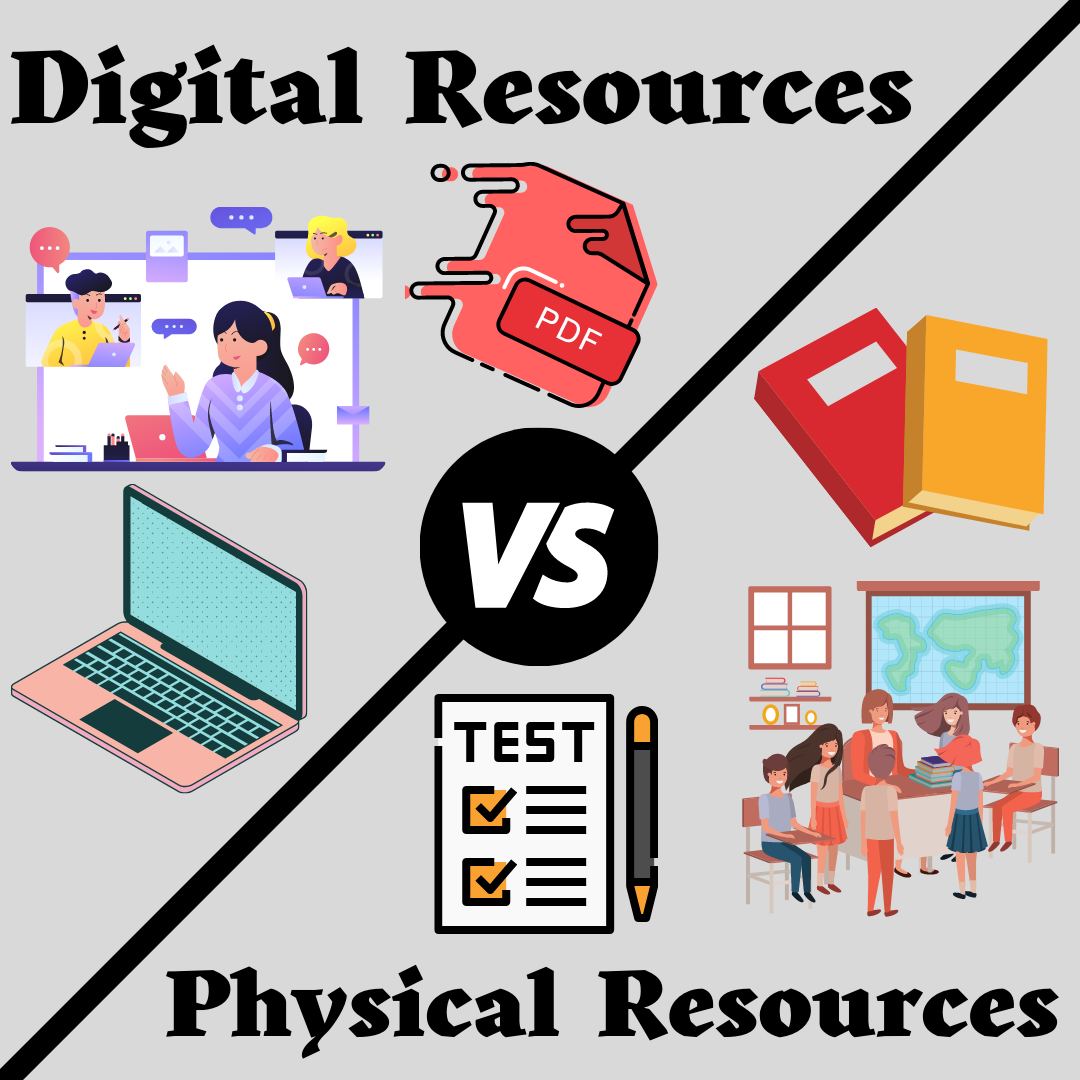Matthew Rutherford
eSomethin staff
Students at PHS have mixed feelings about using physical and digital resources for school.
Some prefer to have digital materials for classes, like online textbooks. Others, however, prefer to have physical resources, like hardbound textbooks that can open up and be carried by hand.
When COVID-19 completely changed students’ way of life in 2020, people had to adjust to the ever-evolving digital world. The way classes were taught and the way students completed assignments changed for many classes, as those classes were originally designed with a physical and in-person learning experience in mind.
Because of this change, almost all learning resources had to be made available online to accommodate to students completing coursework. This meant that course materials like textbooks were unavailable and had to be put online to be accessible to every student in the name of safety.
These online resources seem to have both positive and negative impacts on satisfaction of students.
For example, tools such as text-to-speech readers and audio-books were made available and became an option for online versions of books and articles. These resources are especially helpful to students who learn better when information is expressed to them verbally.

Ryan Oesterle, a junior at PHS, works on homework in the commons before school. Oesterle said that he tends to prefer digital materials for classwork. “It’s more efficient for me. It’s easier to find a specific piece of research rather than to have to open a ton of books and go through it by hand,” he said.
Online assessments also create the possibility of receiving faster feedback and grades even when students are absent from school.
But there are also disadvantages to having assessments and materials online.
Math teacher Ayrn Hinkle said, “Unfortunately it’s hard to, when you’re giving a test online, to have any kind of test security. So there is always the opportunity that students might be using their notes, they might be using a website to get answers. It’s also difficult to have them show their work, you can always have them upload a photo of work but, I’ve had issues in the past where one person does the work and takes a photo and sends it to another person…”
It can also be hard for teachers to monitor students and make sure they are doing their own individual work without cheating.
Max Hambro, a sophomore, said, “I don’t really have a preference for any, I do find physical resources more helpful for me… Mainly with modern world history, I would prefer having a physical textbook, just so it makes it easier to focus and pay attention to it, rather than having it digitally…”
Classes like math and science rely on in-person activities like labs and worksheets to complete the class. These types of classes may become more difficult to teach and complete online.
Word-based classes like English and history may have more flexibility when it comes to putting materials online because those classes don’t require a student to show their thinking numerically or create charts and graphs.
It is important to note is that technology is getting progressively cheaper and convenient for schools.
According to economicshelp.org, the quantum improvements in technology, economies of scale, increased competition as more firms enter the market and price skimming are all factors that play a part in lowering the price and increasing the production of technology.
So it might be cheaper at some point for schools to invest in technology for their students rather than buy new and updated textbooks every few years.
Is there a clear winner in this battle between digital and physical resources? Not entirely—in our school, it seems to depend on the person, and the class that the material is associated with. As new advancements in technology continue, there may come a day when the advantages that technology offers will outweigh the benefits of physical resources and in-person classes.
Other stories on eSomethin:
- English Department Bans All Commas starting April 1 Despite Communication Becoming Confusing
- Perrysburg High School introduces FUNdraiser in the style of “The Hunger Games” on April 1
- Due to Budget Cuts, DOGE Announces Pi to Now Equal 3.0
- Business is booming: Maker-Preneurship is a business and production class at Perrysburg High School
- OPINION: What I’m currently doing to keep myself afloat as a senior in the second semester





